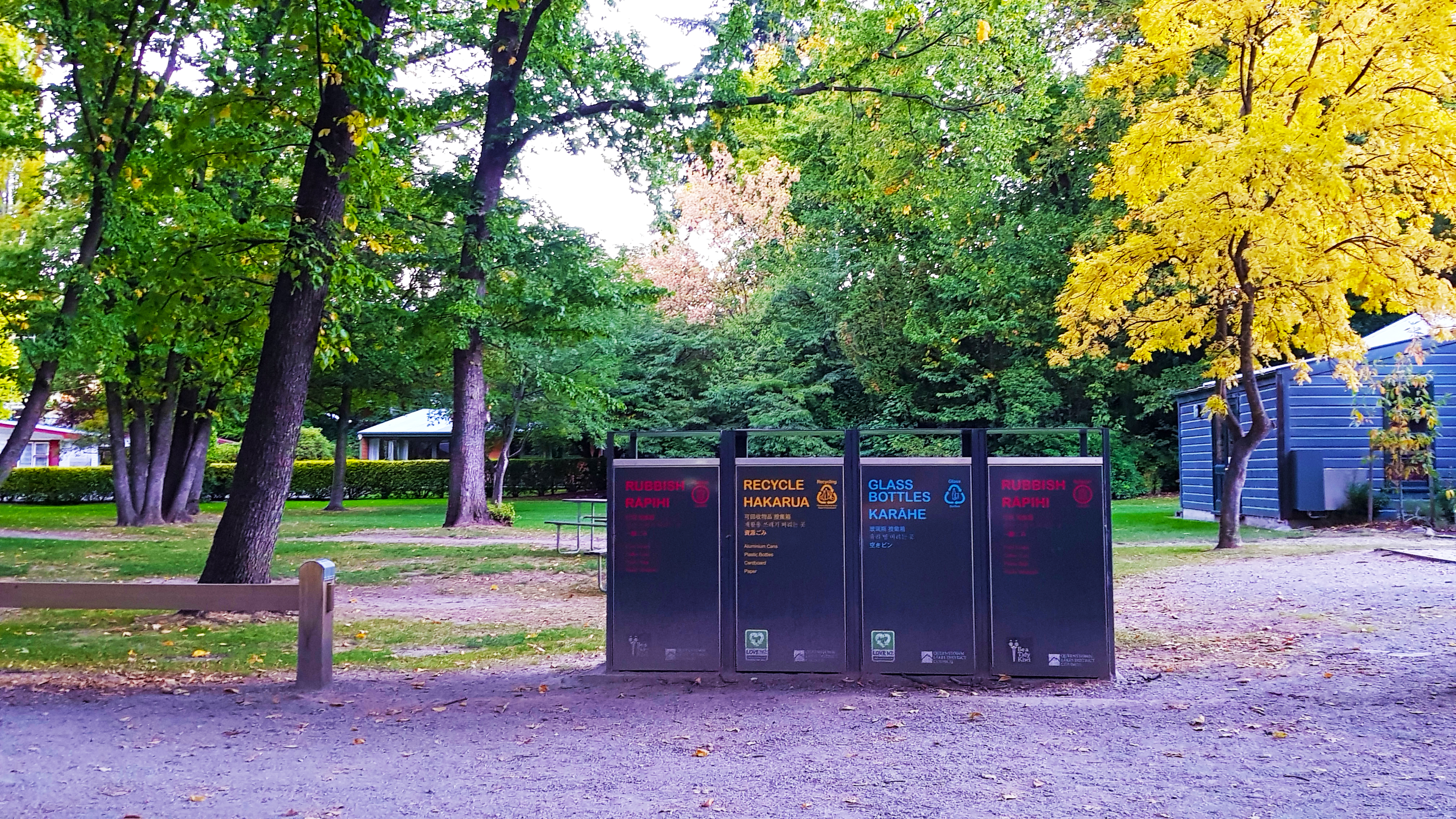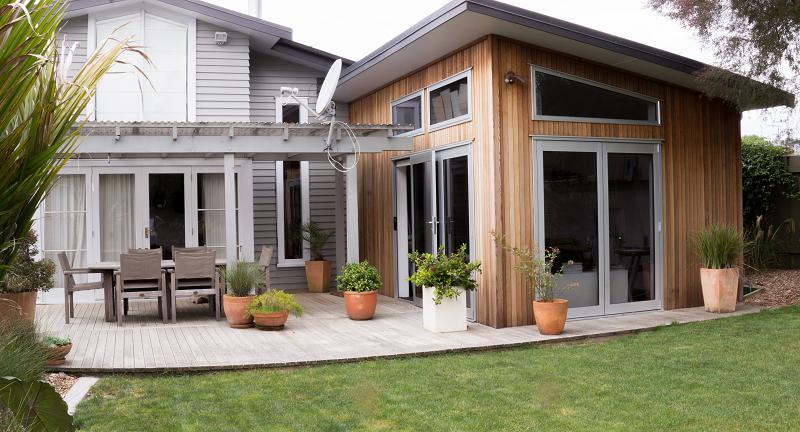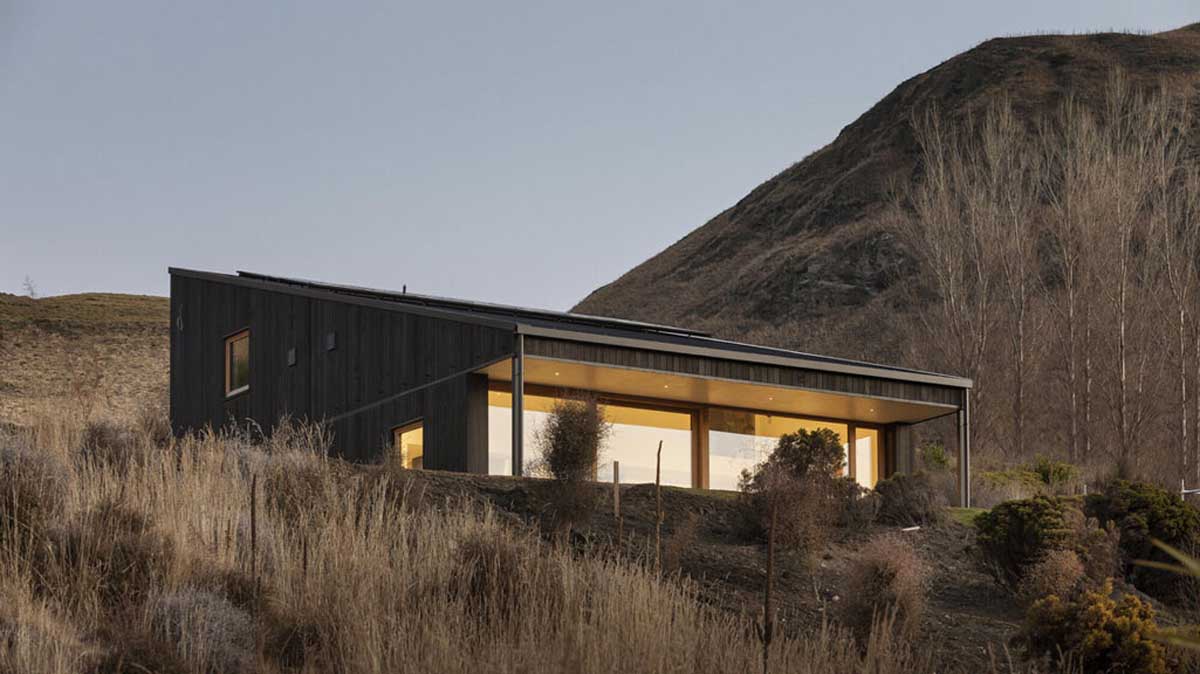Throughout the world, the pressure is on for the construction sector to get serious about reducing its impact on the planet, both in carbon used in the creation of buildings and dwellings, and also in the energy used to keep them warm, or cool throughout their lifespan.
With climate change going from theory, to emergency, in the past decade, construction has become a target for legislation designed to curb its perceived wastefulness, its impact on global supply chains and its influence on future energy needs for communities and nations.
These pressures come at the same time as Governments around the world chooses aggressive infrastructure spending as the way to get through the Covid-19 recession, actions that suggest massive growth in carbon-use in the short to mid-term, right around the globe. So the pressure is on, both to grow, fast, but also to reduce materials, waste and energy at an unprecedented rate.
New Zealand has committed to net zero carbon emissions by 2050 along with our commitments as part of the Paris Climate Accord. As part of this goal, the Building and Construction Sector has been identified by Government as needing to play its part and is developing an Emissions Reduction Plan, which will set out the changes needed.
Currently, construction accounts for around 20 percent of New Zealands carbon emissions through the energy and materials used in buildings. The recent Climate Change Commission draft report found that buildings are responsible for about 3 percent of the long-lived gases emitted by New Zealand in 2018.
The New Zealand Green Building Council (NZGBC), however, uses a consumption view to say that the built environment contributes a fifth of New Zealand’s emissions when you assign emissions released in manufacturing construction materials to the buildings instead of the industrial manufacturers.
The Building for Climate Change documents released before Christmas covered how the built environment is going to help deliver on its obligations under the Climate Change Commission report. New guidance from MBIE, currently out for discussion, suggests future legislation will focus on two key areas of building and construction, operational emissions, and embodied emissions:
Transforming Operational Efficiency these are carbon emissions directly and indirectly attributable to the operation of buildings, such as use of energy for heating, cooling, hot water, lighting, ventilation, appliances, and water, and most importantly, occupant health and wellbeing.
Whole-of-Life Embodied Carbon Emissions Reduction this covers all carbon emissions attributable to the building itself, including construction materials and products across the life cycle of the building, including emissions across the full supply chain of construction materials and products, construction processes and the waste.
Theres a lot to cover in those two areas. On the construction side, waste minimisation goes from nice-to-have to an essential consideration, let alone the debate around whether concrete or steel is better environmentally, or whether wood can fill the gaps.
And the health and wellbeing side of the equation has already seen the introduction of the requirement to maintain certain ambient temperature levels in rental houses for example and this kind of legislation introduced in new homes will require a significant change in thinking and new tools in the design process.
Carbon-Capable
John Jamison, Technical and Development Manager for Winstone Wallboards says to get ready, because change is happening, now.
Builders will need to consider what are the materials that are used, and how much carbon was used in the delivery of those materials to allow that building to be built?
That’s a totally different approach to the way weve done it. Our design community typically doesn’t think that way. Consumers don’t think that way in terms of buildings – it’s usually about form, function and meeting the building code.
And then the second part is the operational aspects of a building. How much energy do you need to use to maintain that building – and this is the kicker – at a set of internal environment conditions?
So, all of a sudden you now have to prescribe what an acceptable internal environment is. If you look at the building code now, which sounds crazy, there is no environment that you’re trying to achieve. There’s an energy efficiency assumed because you’ve put a specified level of R-value insulation in your walls or double-glazed windows, but actually, you don’t know what that outcome is going to be, he says.
As soon as you change that around and say, we actually want to design a building to maintain 16 degrees in bedrooms and 18 degrees in the living areas and not allow it to get too hot over Summer either, you’ve immediately got to think about how much energy it takes to maintain those conditions year-round, so you have to understand what the outcome is, before you even start deciding what level of insulation you need in your wall, Jamison said.
Jamison says energy modeling tools and building physics tools will likely become the norm for all kinds of architects and designers.
Part of the issue here is the small number of climate zones listed in legislation, meaning a place like Nelson is regarded as having a similar climate to Central Otago in the eyes of the building regulators. But as problematic as that obviously is, even within those zones there are all sorts of potentially dramatic differences, such as any differences in shading, orientation, and elevation.
Where is that building being built? What’s its orientation? What’s its form? Is it heavy mass, lightweight mass? Is it shaded or not shaded? You’ve got no idea of what the internal environment will be like and how much energy will be needed to maintain it without analysing the design first, he says.

Designing Green
Sian Taylor of Team Green Architects is preparing for some major changes to the building code, and believes that it’s long overdue. But she also believes that many in the industry will be under-prepared for what needs to happen.
I think it’s a good thing, but it’s like everything change is a challenge as well as an opportunity, so that’s going to come with major challenges, because we as an industry are behind where it needs to be, she says.
I’m personally very passionate about the fact that we should be tackling this way earlier. If we want to make buildings better quality and to better standards, then we should be tackling it at the planning stage. We should be promoting predominantly north-facing sites, or putting the roads on the safe side, or having designs that are suitable for the orientation of the building, because if you’ve got the basics right, even if you build it to the current standards, you’ve made a huge difference.
But if, if the planning is wrong in first place, if the house is facing the wrong direction and you’ve got to put your garage on the north side because that’s where the driveway is, and there’s no other room, then you’re stuffed right from the start.
So, does Taylor believe the future of home building is the passive house?
I suspect it will be. It’s what’s happening in a lot of the world. I’m not sure if it will be necessarily for the full certified passive house or even if it would ever be called that, but essentially the principles of it, which are air-tight design, well ventilated buildings, and obviously, higher insulation, and thermal bridge-free design, all things which building codes around the world have actually been implementing for probably 15 plus years, which we just haven’t done it yet.
And they’re doing it and ratcheting up the standards, I think every two to three to four years, depending where you are. And they do it because it works. So, it creates comfort with low-energy-use, and better health in terms of occupants as well.

Concrete Suggestions:
And while the built environment is one big part of proposed legislation, the carbon use in the creation of the building is another altogether. And raw material suppliers are being challenged to not only improve their processes, but to prove their green credentials on a daily basis.
In recent years an accusing finger has been pointed squarely at concrete production and use, leading to the proposal for even high rises and football stadiums to be made with wood, instead of concrete and steel.
Concrete NZ says the sector has achieved a reduction in emissions from cement of 15 percent between 2005 and 2018 and has developed a vision which states that by 2030 it will have reduced its emissions by another 15 percent to achieve a 30 percent drop from 2005 levels.
Dave Barker, National Sales Manager for LS Concrete says the industry has been aware of the pressure building for a number of years, but in lieu of sort of legislation or forced change or requirements from council, six or seven years ago, they took the responsibility on themselves and did an environmental product declaration, so they understood exactly what the carbon cost was, for all of the concrete produced anywhere in the country.
And as a result of that, we’ve been able to take some positive action and reduce our carbon position by about 20% over those five or six years, he says.
It’s really been a whole lot of small sort of changes, things like where we source our cement from – our partnership with Holsem has really given us a bit of an advantage in that respect and we joined our business with a large trucking company, which gives us some advantages around being able to be more efficient in the way that we drive and service and fill our vehicles and so on.
We use recycled water and recycled materials like fly ash or slag as a replacement of traditional cement – an area where we probably lead the market.
We’ve done other things too, like we have a slab system in the market where weve partnered with a brilliant new company called QuickSet, so that we have edge insulation and under floor insulation, to make our concrete floors significantly more efficient, which mean those passive attributes are heightened, he says.
Barker says a partnership with Resene has seen the company use collected recycled paint as an alternate to air entrainer in concrete.
So those types of things are the sort of things that we’re actively making improvements on and which give us, I think continued competitive position against timber alternatives, Barker says.
Barker believes that concrete sometimes isnt always viewed like-for-like in the sustainability argument.
One of the things to consider is the lifecycle of concrete. There’s a significantly longer durability lifecycle in concrete than there is perhaps in some of the timber products. So, considering the impact over the full length of time of the building is obviously an important thing to consider as well as just the raw carbon.
And then also considering the other attributes of concrete, like it’s thermal mass, there’s no sound transmission, there’s fireproof tendency All those sorts of things obviously continue to concrete some advantages over timber, he said.

Waste Not
Gordon White, Residential Market Manager for Winstone Wallboards, says that while carbon reduction is a massive focus across the industry another significant issue to consider is reducing construction waste going into landfill.
A lot of construction products that are created end up going into landfill. And as you know, if you look around the world, those landfills are filling up pretty fast.
So, we’ve got to make a better use of the resources that we have. It’s a little crazy to see the amount of construction waste that is going into non-reusable areas within the economy.
I think that over the next five to ten years, you’re likely to see a high level of change driven by customer pressure for the construction industry to take more of a social license sort of response. You have to be more aware around sustainability and the construction industry as a whole has its part to play.
We’ve almost created an environment where its become too easy to get rid of the waste, and part of that comes from people thinking it’s someone else’s job. Whereas perhaps a more practical approach is to recognise we need to work more collaboratively as an industry to find practice and viable solutions.
Winstone Wallboards is focusing on a number of sustainability improvements across their business over the next five years, with a new GIB® plasterboard plant in Tauranga due to open in 2023 that will decrease carbon emissions from current levels as well as provide other positive environmental outcomes such as the ability to recycle offcuts generated on-site back into the plasterboard manufacturing process.
We are also working with industry around trying to minimise plasterboard waste generated during the construction process by developing better tools and processes.
Another part of the sustainability conversation is to consider things like timber and plasterboard offcuts, how do you make sure that you reuse those, or you can actually recycle them into something else?
That’s a big focus for Winstone Wallboards – we’re by no means perfect, but the latest data indicates timber and plasterboard are significant contributors to landfill waste coming from the construction industry. Speaking from a plasterboard perspective, its a highly recyclable material with companies such as Green Gorilla in Auckland Canterbury Landscape Supplies in Christchurch recycling these types of products into a range of compost and agricultural products.

Small Ideas
David Wimmer has been building eco buildings, earth homes and timber homes around the world for the past 20 years and has seen his business steadily grow as the world becomes more aware of sustainability issues.
The paradox of Wimmers business is that a passive home costs more to build, but less to live in. So faced with those cost imperatives, his choice (and his clients choice) is to build smaller.
My two designs I’m doing at the moment, they’re all just under 100 square meters. And they are two bedroom, maybe with a little attached cabin or something for a extra guest room. Building smaller and building for the future, Wimmer says.
I think it’s really important, not just thinking of the resale value. I really like to work with the people that want to live in the house, like a forever house designed for the future and for them.
His ambition is not just have a really healthy and comfortable house, but to take a real look at the materials used, trying to use untreated timbers where possible, minimising waste, and designs that make best use of the light all things that were seen as radical and alternative when he started, but soon may be enshrined into regulations for the entire industry.
The little details that make the house healthier, makes the people that work on it healthier and it makes the people that produce the materials healthier. So, it’s kind of a chain reaction, really. It starts off, where the material comes from and who works with it and then you live in it, he says.
So, does Wimmer see the small home as the future home?
Yeah, it’s definitely coming. I mean, not only because the building prices are going up. I mean, that’s definitely one factor. The smaller you build, the cheaper it will get. And not necessarily per square meter, but per structure, per dwelling. My clients want to go smaller and spend more money in the materials, instead of going bigger and have to save on materials.
Wimmer says that the limited range of sustainable products is a limitation and a cost-burden on the eco-home builder.
In Europe, the timber is more used, like the whole timber’s used. The offcuts and things are used for insulation or for boards. And then structural, there’s a lot of timber used in insulation and solid walls. And so, New Zealand having so many trees and forestry, you would think that there would be a market in that part.
So is Wimmer seeing, your average architect, your average builder, actually embracing some of the eco-housing trends?
Yeah. Probably not the developers yet, but the individual person that wants a long-term home, they do a bit more research and then they put it across to the architect and they basically have to change to suit their customer. I’ve seen that on a few plans now.
Legislation will help, that’s for sure. Like the planning with the higher insulation values, making houses healthy, it’s such an important thing, really.
And Wimmer says regulation change has been taking a long time coming Compared with other nations where hes worked.
Like France and Germany… houses have to have a passive standard to pass the consent process. It might be hard to implement that here, but starting with the higher R-values starts that chain reaction. You have a higher R-value, and you need better insulation or thicker walls. And it’ll kind of give that chain reaction to make the house better. So, I think, putting some legislation into that is the only way you can change something in the big scale.
I would say that every person should be able to live in a healthy, comfortable home. And it starts with the suppliers, the suppliers with the materials, so the architect can draw them and the builders can install them. It will be a lot more fun for a builder to install good, healthy products. And for the long run, for people living in the house, because we do spend a lot of time in the house… That’s the future, healthy homes for healthy people. Healthy and happy people.

